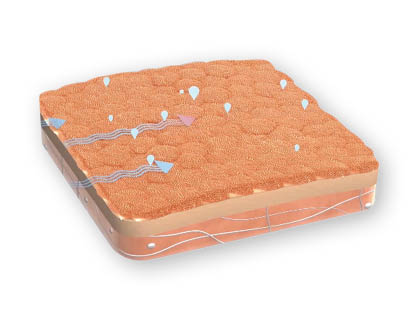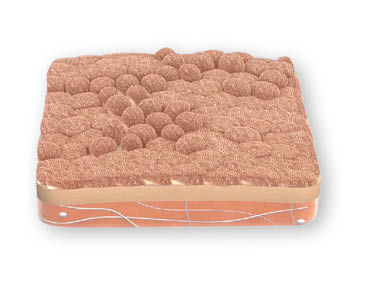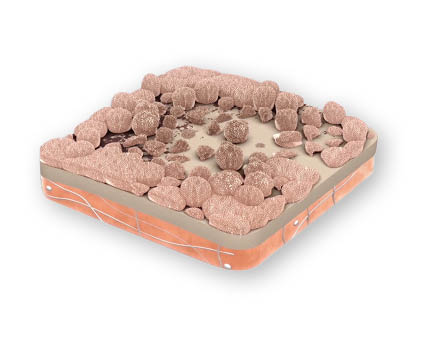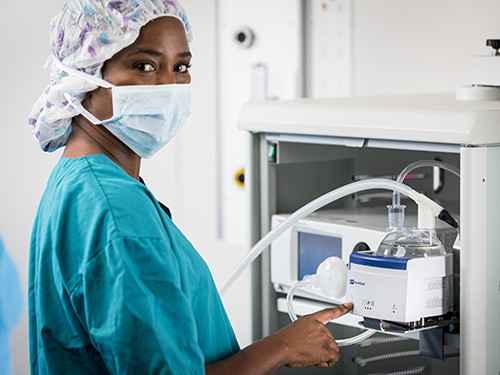Evaporative cooling during surgery
Surgical humidification aims to reduce the effects of cellular desiccation and evaporative heat loss when the body is exposed to cold, dry CO2 during laparoscopic surgery or ambient air during open surgery.
| DURING SURGERY | ► | POST SURGERY | ► | LONG TERM |
|---|---|---|---|---|
| Reduces the incidence of peri-operative hypothermia1,2 | Improves end of surgery core body temperature2,3 | May reduce adhesion formation∆,10 | ||
| May improve local tissue oxygenation#∆,15 | Reduces local peritoneal inflammation9 | May reduce tumour burden«∆,11 | ||
| May improve local tissue perfusion#∆,16 | Reduces SSI«,1 | May reduce tumour metastasis«∆,11 | ||
| Deflects particles§∆,17 | Reduces time in recovery«,14 | Reduction in economic costs1 | ||
« in laparoscopic surgery; # in open surgery; ∆ as demonstrated in an animal model; § as demonstrated in a wound model. | ||||
The condition of the CO2 traditionally used during laparoscopic surgery and the ambient air during open surgery is vastly different to the conditions of the human body, directly drawing heat and moisture from the already compromised patient. Introducing warm, humidified CO2 provides an environment which reflects the physiologic condition of the peritoneum.
In order to demonstrate the effects of CO2 gas used in laparoscopic surgery, this brief film shows three eggs exposed to different CO2 gas conditions over a 60 minute period.
Surgical humidification aims to reduce the effects of cellular desiccation and evaporative heat loss when the body is exposed to cold, dry CO2 during laparoscopic surgery or ambient air during open surgery.




The thermal images below demonstrate the cooling effects of 2 hours cold, dry CO2 laparoscopic insufflation compared with warm, humidified insufflation in a porcine model.

These images illustrate the effects warm, humidified CO2 has on improving wound temperature in open surgery.

Laparoscopic porcine images courtesy of Matsuda et al., 2002.6
Open images Fisher & Paykel Healthcare, 2016.
Peritoneal damage leads to an increased response and the release of pro-inflammatory and pro-angiogenic mediators enhancing implantation of disseminated cancer cells.
Surgical humidification reduces local peritoneal inflammation9 and may reduce adhesion formation10, tumour burden and metastasis11«∆.

During laparoscopic surgery, as the cold, dry gas passes over the peritoneal tissue it draws heat and moisture from the body. This results in the shortening and progressive disapperance of microvilli on the mesothelial cells.

Under this stress, the mesothelial cells start to bulge and retract, breaking cell junctions.

Finally, a large number of cells undergo apoptosis and detach from the basement membrane, leaving it exposed12. This effect has also been observed in open surgery from exposure to ambient air13.
Watch this video showing the response from staff after introducing HumiGard™ surgical humidification at a laparoscopic research and education center in Colchester, UK. The ICENI center has completed a retrospective audit on the introduction of HumiGard™ which demonstrates improved temperature maintenance and reduced incidence of Surgical Site infection17.
Fisher & Paykel Healthcare has provided research funding to the ICENI Centre.

Download our Surgical Humidification Therapy Brochure
Visit our HumiGard System Product Page